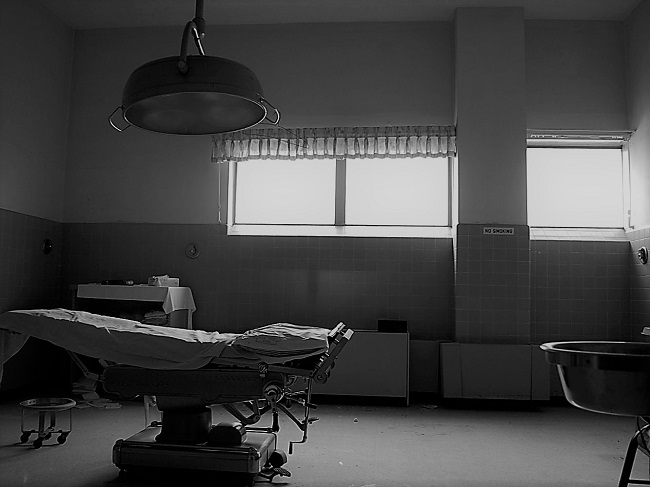“Memory itself is an internal rumour; and when to this hearsay within the mind we add the falsified echoes that reach us from others, we have but a shifting and unseizable basis to build upon. The picture we frame of the past changes continually and grows every day less similar to the original experience which it purports to describe.”
– George Santayana
With each trip we make around the sun, the truth rings louder in Santayana’s hauntingly beautiful depiction of the evolution of memory. Like characters from Kurosawa’s masterpiece, Rashomon, we are destined to misremember motives and details surrounding the events of our lives. Selective perception puts us at a disadvantage from the outset. Add to that “the falsified echoes that reach us from others,” and we need to accept the possibility of inaccuracies, even in our most vivid memories.
If our own personal memories reside on shifting sands and are vulnerable to outside influences, imagine how much more vulnerable are collective memories spun to the media by sources that have proven to be unreliable.
Sketchy Details
While writing my book, In the Name of The Pill, I became interested in the Puerto Rican drug trials that Dr. Gregory Pincus and Dr. John Rock presented to the FDA during the approval process for hormonal birth control. These trials were later mentioned in the Nelson Pill Hearings, which is where I first read about them.
The testimony in those Hearings discussed five young women who died during the trials. The doctors apparently never even considered attributing the deaths of these otherwise healthy young women to the drug they were studying, and each woman was buried without an autopsy. As I began digging through the media for more stories on the Puerto Rican drug trial, I noticed that recent accounts often neglected to mention the women who died, and the ones that did usually stated that only three women died… Merely shifting sands?
Digging Up More Trials
It is frustrating to try to piece together the facts from the birth control trials because so much of the information is incomplete or errant. This may have been by design. After reviewing Dr. Pincus’ notes in the Library of Congress, women’s health author, Barbara Seaman, mused that she was surprised he hadn’t burned the evidence.
The powerful forces and mysterious manipulations that ultimately gave us hormonal birth control have fueled my passion for this subject over the past few years. No matter how much research I do, the rabbit hole always seems to go deeper.
Recently, Abby Epstein, the director of the upcoming documentary, The Business of Birth Control, shared with me a bundle of archived documents they had just unearthed. It was like a treasure trove of forgotten birth control history filled with interesting facts and tidbits. Immediately, I stumbled upon a new mystery. In an article titled, “Population Manipulation” from Off Our Backs magazine, a bi-monthly published by “radical feminists” in the early 70s. Here’s what caught my attention:
“Women have been the guinea pigs for contraception and population control. Poor women are especially vulnerable. The first testing of the pill was on women in Puerto Rico, Haiti and the mountains of Kentucky…”
I have previously seen mentions of trials in Haiti but this was the first time I heard of trials associated with my birth state, Kentucky – another piece of the narrative that has disappeared over time. This piqued my curiosity. After more research, here is my attempt to clear up birth control’s misremembered history.
A Brief History of Hormonal Birth Control Trials
In 1951, Margaret Sanger helped Dr. Gregory Pincus obtain funds to begin testing the effects of synthetic hormones on the reproductive systems of rabbits. A year later she brought the wealthy heiress, Katherine McCormick, to visit his lab in Worcester, Massachusetts. The women dreamed of a “magic pill” that would empower women everywhere to control their fertility. Mrs. McCormick was so impressed with the promise of his studies she agreed to fund Dr. Pincus’ continuing work.
Dr. Pincus teamed up with Dr. John Rock from Harvard, which had a longstanding relationship with Worcester State Hospital. By 1954, the doctors were testing hormones on human mental patients. After giving the patients the prototype for the birth control pill, they “sliced into their uteruses in an effort to understand the drug’s effect on ovulation.”
In reality, this test did little more than allow them to monitor dosage for toxicity and tolerability. Since the patients weren’t having sex, it provided no proof of efficacy as a contraceptive. As was the case with many of his experiments, many in the medical community questioned Dr. Pincus’ ethics. Another example of his lack of scruples came a short time later at the same hospital, when he performed testicular biopsies on schizophrenic men without anesthesia to study their “castration anxiety.”
Ethical or not, Mrs. McCormick was frustrated by the pace of science when it came to her contraceptive investment, she famously lamented to Mrs. Sanger in a letter, “[We need] a cage of ovulating females to experiment with.”
Science as a Shell Game
The imagery is shocking – caged women reduced to objects of fertility. Her phrasing reveals a lot about how the researchers and their financiers viewed the women who would eventually be taking these drugs and their attitudes toward them. They never anticipated that The Pill would be taken by the women with whom they played bridge. These drugs were being designed for a certain kind of woman – “the wrong type [who] seemed to be multiplying at an unprecedented rate.”
The doctors found their first ‘cage’ of ovulating females in the slums of Puerto Rico in 1956. With no informed consent and no warning that this was a trial, the doctors began giving the women Enovid, the first-generation Pill, saying that it ‘ would keep them from having children they couldn’t support.’ As I mentioned previously, five women died during the trial. 65 percent of the patients complained of at least one side effect. Believing their complaints were psychological in nature, Dr. Pincus chalked up the complaints to the “emotional super-activity of Puerto Rican women.”
As the two doctors refused to let anything impede their progress, red flags were being raised, even by their partner drug company, G.D. Searle. Their medical director sent Dr. Rock to explain, “We here have long been disturbed by the casualness with which materials pass from Pincus’s animals to your patients.”
Undaunted by the drug company’s concerns but displeased with how the trials were progressing, Dr. Rock recommended conducting further trials in the Appalachian Mountains of Eastern Kentucky utilizing Frontier Nursing Service (FNS). Before we dive into FNS, I must confess this brief history is most certainly incomplete as well. I have seen mentions of smaller trials in the slums of Los Angeles as well as the previously mentioned trials in Haiti, but have failed to find any details about them. If anyone has information on those offshoots, please contact me.
Kentucky Birth Control Trials
Life magazine had focused national attention on the “chronic baby boom” happening in the Appalachian Mountains of Eastern Kentucky, calling it “a biological joy ride to hell.” Coincidentally, Dr. Rock’s dear family friend, Mary Breckinridge ran FNS, an organization providing nurse-midwifery services to the region. She had become friends with Dr. Rock’s wife while volunteering after World War I.
Beyond serving the ideal demographic, Dr. Rock found FNS appealing because medical research had been one of the founding goals of the organization. Consequently, they boasted a 30-year history of meticulous recordkeeping.
FNS famously promoted their participation in many trials. Their fundraising materials at the time described studies related to a hookworm treatment, nutritional deficiencies, and toxemia of pregnancy. However, the organization remained curiously quiet about their work on the birth control trial. Historians have noted “little more than a few references in meeting minutes to ‘Dr. Rock’s pills.'”
Archived files show that 140 women participated in the trial between 1959 and 1966. Fifty-two women dropped out of the trial, and one woman died from a heart attack. Records indicate the 30-year old woman had no previous heart problems or unusual health conditions. Nonetheless, as was the case in Puerto Rico, it was assumed The Pill had nothing to do with her death, and she too was buried without an autopsy.
Browbeating the FDA
With Enovid being approved as a contraceptive by the FDA in May 1960, it’s doubtful that any data from the FNS trials, which only started a few months prior, made it into the submission. Regardless of which data comprised G.D. Searle’s submission to the FDA, the truly amazing story is that these synthetic hormones were approved for human use only nine years after Dr. Pincus first began his animal studies.
How is it possible that such a groundbreaking new drug – the first drug designed to be taken chronically by healthy patients – could be approved so quickly?
While recording an interview for an oral history of FNS, Dr. Rock explained that he had grown tired of waiting for the FDA to approve The Pill. He and two officials from Searle flew to Washington D.C. to see if they could speed up the process. Here’s how he explains the encounter:
“The fellow who had charge of it was a thirty-year old practitioner or something in Washington. And he came in the office, and he had all the material – a great stack of stuff on his desk – and he hadn’t even look at it. So we talked about it and he said he would go through it as soon as he could. And I can remember I took off my jacket, stood up… and I went over to the desk. [I said] ‘You have no time. You’ll do it now.’ And he said, ‘Oh alright.’ And so he signed the whatdoyoucallit, and that was it. That made a great impression of the Searle people, that I browbeat the government into taking the final step. But we knew it was all right. I mean I was convinced. My conscience was clear about that.”
Framing the Past
Hormonal birth control has been with us for so many decades that most people assume the question of safety was answered long ago. We forget that the FDA of that day was much different than the agency we know today. Framed by Dr. Rock’s memory of how The Pill was ultimately ‘approved,’ the case can be made that we need to re-evaluate The Pill with fresh eyes. And, we can start with this most basic question, “Are women being properly informed about the risks of hormonal birth control BEFORE being prescribed?”

The FDA approved The Pill despite it not being proven safe. Today, it has been linked to everything from blood clots and cancer to lupus and Crohn’s disease — and still has not been proven safe.
This book explores the medical and historical disconnects that brought us to this point.
Last updated on October 21, 2023 at 9:38 pm – Image source: Amazon Affiliate Program. All statements without guarantee.
We Need Your Help
More people than ever are reading Hormones Matter, a testament to the need for independent voices in health and medicine. We are not funded and accept limited advertising. Unlike many health sites, we don’t force you to purchase a subscription. We believe health information should be open to all. If you read Hormones Matter, like it, please help support it. Contribute now.
Yes, I would like to support Hormones Matter.
Image credit: Mike Lacon/Flicker, CC2.0; edited to black and white.
This article was published originally on April 6, 2020.
















haiti was actually a big research project as a whole, with the successful slave rebelion and all was financed and orchestrated by the same ppl, im sure they were doing all kinds of experiment, whether they were connected to this group im not so sure. at the highest levels they all connect. FNS was part of a network to deliver rockefeller medicine. one report i found said founder mary brekenridge delivered 1/4 million innoculations. these were hillbillys that had there plant based medicine men removed by the Flexner report. I suspect any offshoots would be similar, an agent or two working inside a legitimate facility. email me back